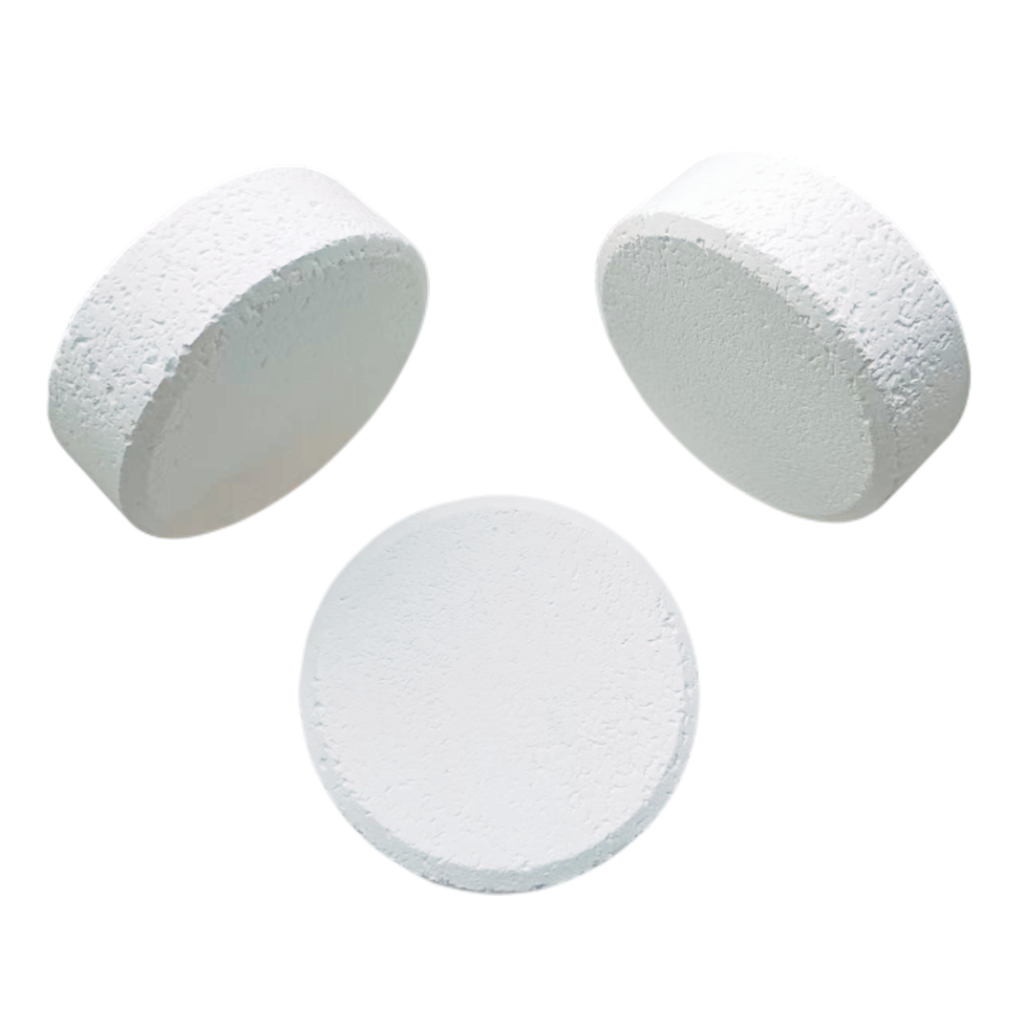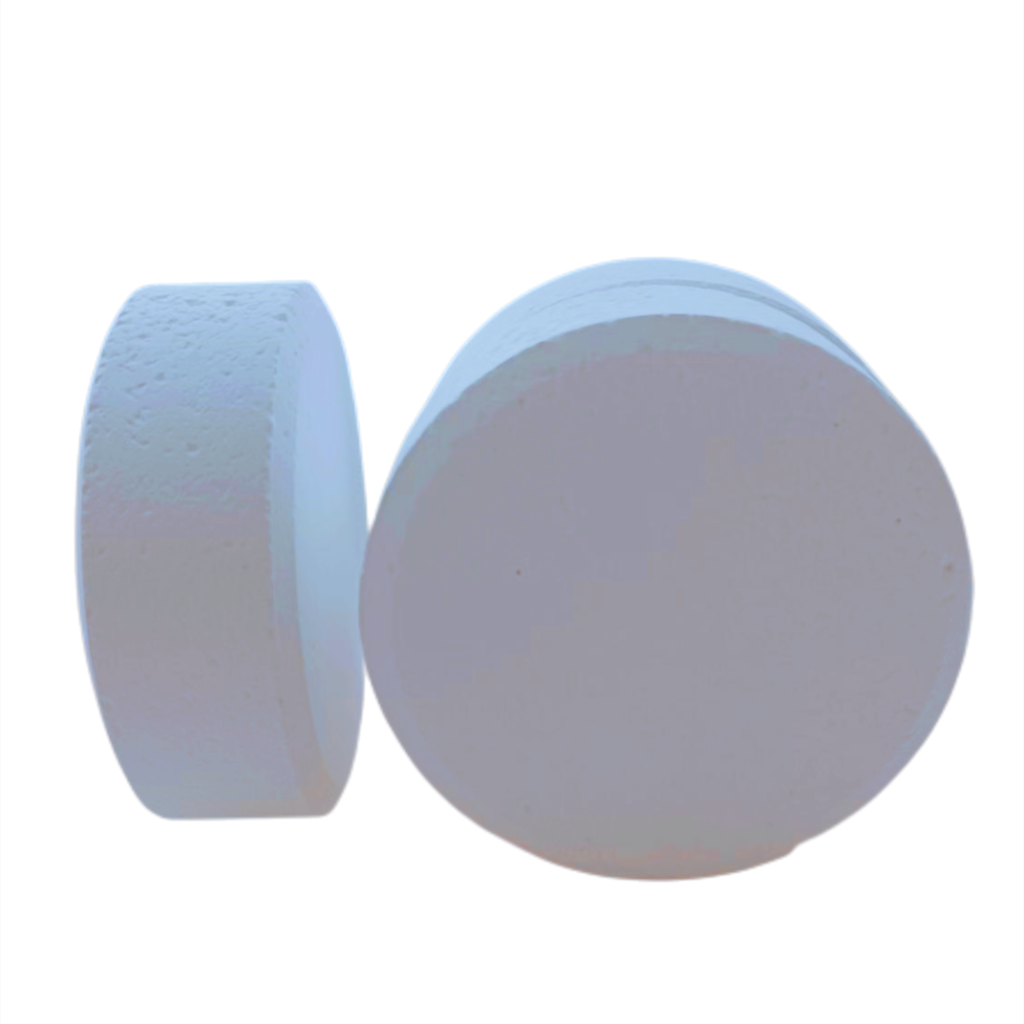I.Introduction
Chlorine tablets play a vital role in water treatment, ensuring effective disinfection, bacteria control, and algae prevention. These versatile tablets are commonly used in pools, drinking water systems, and industrial applications. However, the effectiveness of chlorine tablets can vary significantly depending on water quality. Factors such as pH levels, hardness, and organic content can influence their performance. In this article, we will explore how to optimize the use of chlorine tablets across different water conditions, ensuring safety and efficiency. As a leading Chlorine tablets supplier on sale, we aim to provide valuable insights for their proper application.

II.Classification and Characteristics of Different Water Types
Understanding the characteristics of different water types is crucial to optimizing the use of Chlorine tablets. Below are the major categories and their unique properties:
1. Hard Water
Hard water contains high concentrations of calcium and magnesium ions. These minerals often lead to scaling and can reduce the efficacy of chlorine.
Challenges:
Calcium buildup on surfaces and equipment.
Interference with the dissolution and action of Chlorine tablets.
2. Soft Water
Soft water has low mineral content, making it more aggressive and potentially corrosive.
Challenges:
Overuse of chlorine may cause excessive corrosion of pipes and fixtures.
Rapid release of chlorine into the water, leading to uneven disinfection.
3. Acidic Water (pH below 7)
Acidic water is characterized by low pH levels, which can accelerate the dissolution of Chlorine tablets.
Challenges:
Reduced stability of chlorine in an acidic environment.
Potential for corrosion of equipment and infrastructure.
4. Alkaline Water (pH above 7)
Alkaline water has a high pH, often requiring additional chlorine to maintain disinfection efficiency.
Challenges:
Delayed chlorination effects.
Reduced efficacy of chlorine against pathogens.
5. High Organic Content Water
Water with significant amounts of suspended solids and organic matter can consume chlorine, reducing its availability for disinfection.
Challenges:
High chlorine demand.
Formation of chlorinated byproducts, such as chloramines, which can cause odors and irritants.
III.Techniques for Using Chlorine Tablets in Different Water Conditions
To maximize the benefits of Chlorine tablets, tailored strategies must be employed for each type of water.
1. In Hard Water
Adjust water hardness: Add softening agents to reduce calcium and magnesium levels before applying chlorine.
Choose the right product: Opt for chlorine tablets formulated specifically for hard water conditions to prevent scaling and improve efficiency.
2. In Soft Water
Control dosage carefully: Use lower quantities of chlorine to avoid excessive corrosion.
Use slow-dissolving tablets: Select buffered or slow-release Chlorine tablets to maintain consistent chlorination over time.
3. In Acidic Water
Adjust pH levels: Use pH increasers like soda ash to bring the water closer to neutral (pH 7-7.5) before adding chlorine.
Protect equipment: Ensure that materials in contact with acidic water are corrosion-resistant.
4. In Alkaline Water
Monitor pH levels: Adjust pH to the ideal range of 7.2-7.6 for chlorine efficacy.
Increase chlorine dosage: Compensate for the slower chlorination process by slightly increasing the number of tablets used.
5. In High Organic Content Water
Pre-treat the water: Use filtration or coagulation to remove as much organic material as possible before introducing chlorine.
Measure chlorine demand: Conduct regular chlorine demand tests to determine the appropriate dosage.
IV.Common Issues and Solutions When Using Chlorine Tablets
Even with careful planning, challenges may arise when using Chlorine tablets. Here are some common issues and how to address them:
1. Incomplete Dissolution of Chlorine Tablets
Cause: Low water temperature or poor circulation.
Solution: Use specialized dissolution equipment or higher-efficiency Chlorine tablets from a reliable Chlorine tablets supplier on sale.
2. Ineffective Disinfection
Cause: High chlorine demand due to organic matter or improper pH levels.
Solution: Adjust water parameters and increase the chlorine dosage based on water quality tests.
3. Odors or Byproducts in Water
Cause: Formation of chloramines from interactions between chlorine and organic compounds.
Solution: Reduce organic matter before chlorination and ensure adequate aeration or ventilation.
V.Safety and Environmental Considerations for Chlorine Tablets
While Chlorine tablets are highly effective, their use must prioritize safety and sustainability.
1. Safe Handling and Storage
Store in a dry, cool environment to prevent degradation or accidental reactions.
Use proper personal protective equipment (PPE) during handling.
2. Environmentally Friendly Practices
Avoid overuse of chlorine to minimize environmental impact.
Integrate other treatment methods, such as UV or ozone, to reduce overall chlorine usage.
As a trusted wholesale Chlorine tablet manufacturer, we take pride in offering high-quality products that prioritize both effectiveness and environmental safety.
VI.Conclusion
Optimizing the use of Chlorine tablets across various water types ensures effective disinfection and minimizes challenges such as corrosion, scaling, and high chlorine demand. By understanding the characteristics of hard, soft, acidic, alkaline, and high-organic-content water, users can tailor their chlorine treatments for maximum efficiency. Regular water quality testing and proper adjustments to pH and hardness levels are essential steps in this process.
As a leading Chlorine tablets supplier on sale, we offer expert guidance and premium products to help you achieve your water treatment goals. By implementing the techniques outlined in this article, you can ensure safe, effective, and sustainable use of Chlorine tablets, contributing to healthier and cleaner water systems worldwide.


 Instant
Quote
Instant
Quote Email
Us
Email
Us